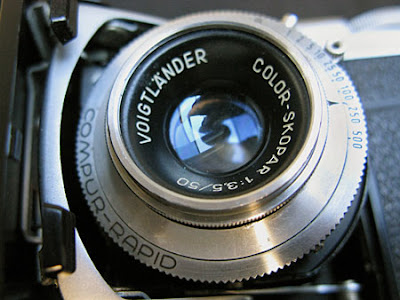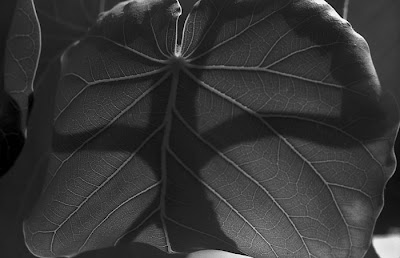There are a lot of fine old cameras, mostly made by Kodak, that were designed to use the now-defunct 620 rollfilm format. Many of those cameras can be used today with still-available 120 film. Sometimes, the ends of the film spool will need to be trimmed down to get it to fit in the film compartment of the camera. I was content to use that method until I acquired some cameras such as the superlative Kodak Duo Six-20 which has a film compartment that is just too small to admit even a trimmed down 120 spool. With an otherwise unusable fine camera as motivation, I was able to overcome my own resistance to rerolling 120 onto 620 reels.
To get started you will need a fresh roll of 120 film, two old metal 620 reels which are just a little smaller than the modern plastic 120 reels, and a dark film changing bag which is normally used for daylight loading of film into sheet-film holders or developing cannisters.
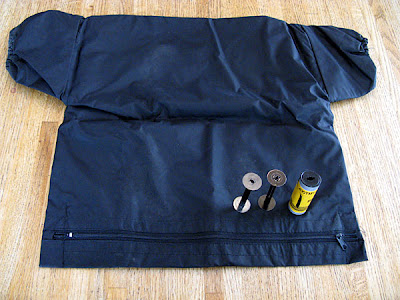
Peel off the paper retaining strip from the film roll and insert the tapered end of the backing paper squarely into the longest slot in the first 620 reel. Roll enough of the backing paper onto the reel so that it will all stay in place when you lay it down inside the dark bag. Now, place everything including the second empty 620 reel inside the bag, zip it up and put your hands in through the elastic-cuffed sleeves of the bag. Everything from here on is done in total darkness.
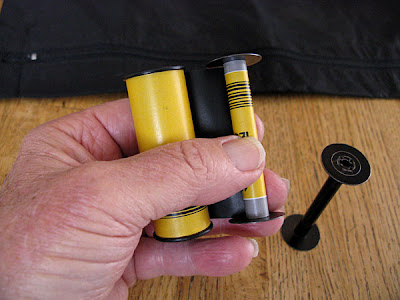
Take up the slack and start rolling the backing paper further on to the 620 reel. Maintain some tension with your fingers on both reels so that the film winds on smoothly but do not use excessive force which could damage the film emulsion. If you feel uncertain about the process, it would be worthwhile to sacrifice a roll of film to practice the procedure in daylight once to get the feel of it.
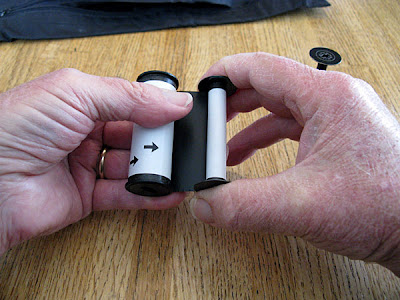
After you have rolled about a foot of the backing paper onto the 620 reel you will come to the beginning of the actual film with is attached to the backing paper with a strip of tape. Just keep right on, smoothly rolling the backing paper and attached film onto the 620 reel.
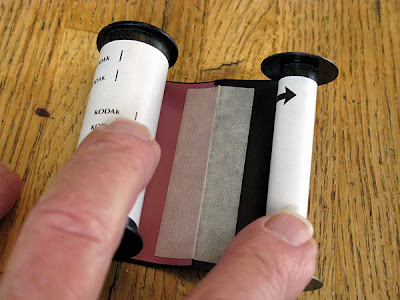
When you get to the end you will have another retaining strip hanging off the end of the backing paper which is normally used to secure the roll after you have removed it from the camera. I generally just leave that alone, though you could tear it off at that point and just use a rubber band to secure the roll if necessary until it is processed.
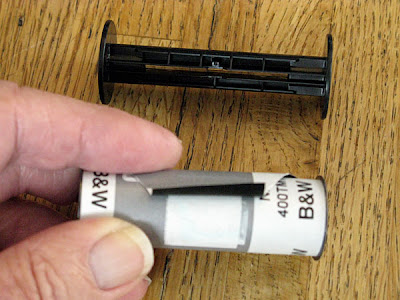
Set aside the plastic 120 reel, pick up the second empty 620 reel and thread the tapered end of the backing paper into the long slot as before. You should be able to distinguish the long slot from the short one by running your fingertip along the shaft of the reel. Be sure the paper is squarely centered in the reel and start winding again while maintaining some tension.
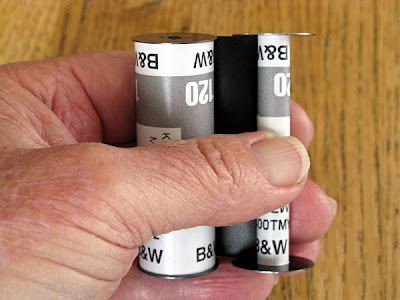
You will soon come to the end of the film which is free and not taped to the backing paper as is the other end. You may not immediately detect the film end, but you will feel the stiff and slick surface as distinct from the backing paper. You will need to tuck the free end of the film under the rolled backing paper, and then continuing rolling on, maintaining appropriate tension.
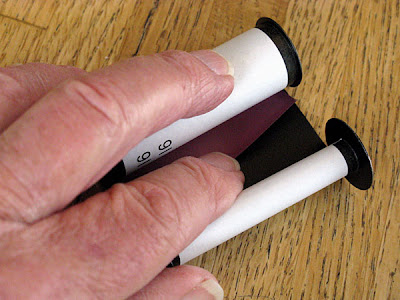
About a foot from finishing, you will again encounter the end of the film that is taped onto the backing paper. At this point, some people recommend carefully peeling off the tape and repositioning it to remove any buckling of the film that has been created by the rolling process. I have not found that to be necessary, possibly because the use of two 620 spools in the process seems to avoid the buckling problem.
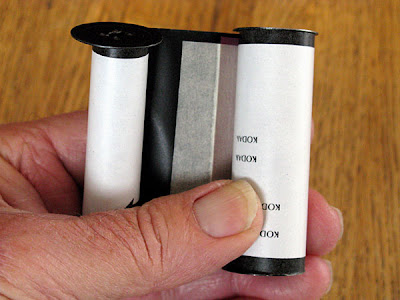
Continue rolling on the film and backing to the end and you have your roll of film ready for loading into your 620 camera. If you need to store the film, put a rubber band around the roll to keep it secured, and store it in a dark container. If you are going to have someone else process your film, be sure to tell them that you need to get your 620 reel back with the negatives.
I continued for a time to use trimmed 120 reels in my cameras which would permit that. However, the rerolled film on 620 reels tends to advance much more smoothly in any of the cameras designed for the format, and I now use only the rerolling method.






























